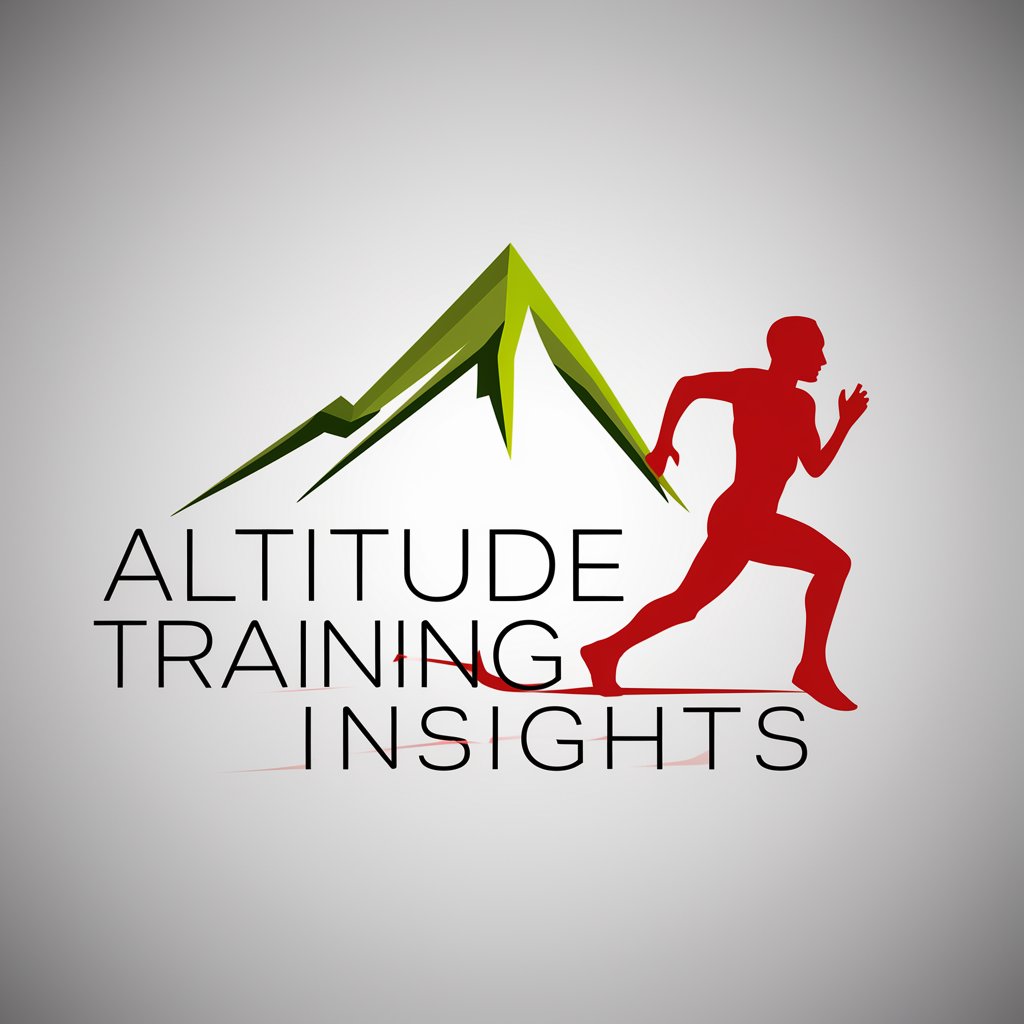Altitude Training Insights - Altitude Training Analysis

Welcome to Altitude Training Insights, your expert guide to altitude training benefits.
Elevate Your Performance with AI
Explain the physiological benefits of altitude training for endurance athletes.
Describe the different altitude training methods and their specific impacts on athletic performance.
How does altitude training enhance red blood cell production and oxygen transport?
What are the key considerations for athletes planning an altitude training camp?
Get Embed Code
Introduction to Altitude Training Insights
Altitude Training Insights is designed as an expert resource to provide athletes, coaches, and sports scientists with in-depth knowledge and insights into the effects of altitude training on athletic performance and physiological adaptation. Leveraging a comprehensive database of scientific studies, including landmark research and the latest findings, it aims to optimize training strategies for those looking to enhance endurance, speed, and overall athletic capabilities through altitude exposure. For example, an athlete preparing for a marathon might use Altitude Training Insights to understand how to structure their training phases at different altitudes to maximize red blood cell production, improve oxygen delivery, and optimize recovery times. Powered by ChatGPT-4o。

Main Functions of Altitude Training Insights
Scientifically-backed Training Recommendations
Example
Providing a detailed plan for athletes to live high and train low, based on the Levine and Stray-Gundersen study, which shows benefits for endurance performance.
Scenario
A competitive runner looking to improve their 5k time might use these insights to plan a 4-week altitude camp, ensuring they acclimate at a moderate altitude but complete high-intensity workouts at lower elevations to maintain training intensity.
Physiological Adaptation Analysis
Example
Analyzing changes in red blood cell count, VO2 max, and aerobic capacity as athletes undergo altitude training.
Scenario
A cycling coach could use this function to monitor the physiological adaptations of their team during a high-altitude training camp, adjusting individual training loads based on each athlete's response to altitude.
Altitude Acclimatization Strategies
Example
Outlining best practices for acclimatizing to altitude to minimize the risk of altitude sickness while maximizing training benefits.
Scenario
A mountaineer preparing for a high-altitude climb might use these strategies to plan pre-climb acclimatization hikes and incorporate simulated altitude exposure using hypoxic tents.
Ideal Users of Altitude Training Insights Services
Endurance Athletes
Runners, cyclists, swimmers, and triathletes seeking to enhance their aerobic capacity, endurance, and performance at sea level or prepare for competitions at altitude.
Coaches and Sports Scientists
Individuals responsible for designing and implementing training programs who require evidence-based strategies to optimize the performance of athletes through altitude training.
Mountaineers and High-Altitude Trekkers
Outdoor adventurers who need to prepare their bodies for the rigors of high-altitude environments, focusing on acclimatization and minimizing the impact of altitude sickness.

How to Use Altitude Training Insights
1
Start by visiting yeschat.ai for a free trial, accessible without any need to log in or subscribe to ChatGPT Plus.
2
Identify your specific need or question related to altitude training, whether it's for athletic performance improvement, physiological adaptations, or health benefits.
3
Utilize the provided search or query input box to type in your question or topic of interest related to altitude training insights.
4
Review the generated insights, which include scientific studies, research documents, and expert analysis on altitude training.
5
Apply the insights to your training regimen, academic research, or professional practice, making sure to consider any safety guidelines and personal health conditions.
Try other advanced and practical GPTs
★グルグルサイバー★
Spin the Future: Cyberpunk AI Slots

Dino-Discover
Uncovering the Prehistoric World with AI

Logo MasterMIND AI
Crafting Your Brand's Identity, AI-Powered.

マレーシア・シンガポール情報
AI-powered insights into Malaysia and Singapore

水浒专家
Unravel the classic with AI

JournalClubGPT
AI-powered academic insights at your fingertips.

Positive Perspective
AI-Powered Beacon of Positivity

GPT画伯
Transforming Ideas into Artistic Reality with AI

SuperTutor
Empower Learning with AI Assistance

书籍推荐师
AI-powered, personalized book recommendations

🤺 Mini Maker lv3.1
Bringing Characters to Life with AI

Prompt Remixer
Unleashing Creativity with AI-Powered Remixes

Altitude Training Insights Q&A
What are the benefits of altitude training for athletes?
Altitude training can enhance athletic performance by improving VO2 max, increasing red blood cell count, and enhancing endurance. It leverages hypoxic conditions to stimulate adaptations that are beneficial once the athlete returns to sea level.
How does altitude training affect physiological adaptations?
Physiological adaptations to altitude training include increased hemoglobin concentration, improved oxygen delivery and utilization, and adaptations in muscle metabolism. These changes help the body to perform better under reduced oxygen availability.
Can altitude training benefit non-athletes?
Yes, altitude training can benefit non-athletes by improving cardiovascular health, increasing metabolic efficiency, and enhancing the body's ability to utilize oxygen more effectively, which can contribute to overall health and wellness.
What is the optimal altitude for training to maximize performance gains?
The optimal altitude for training varies but is generally considered to be between 2,000 to 3,000 meters. This range provides sufficient hypoxia for adaptation without excessively hindering training intensity or risking altitude sickness.
Are there any risks associated with altitude training?
Yes, risks include altitude sickness, dehydration, and overtraining syndrome due to the increased stress on the body. It's crucial to ascend gradually, stay hydrated, and listen to the body's response to training at elevation.
